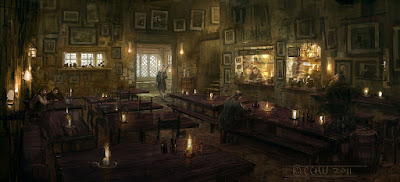Set sail with Cailico Jack

Starring at my reflection in the pub looking glass, I am disappointed to recognize myself. Although the handkerchief hides the feminine curve of my neck and my late father’s seaman jacket conceals my chest, my face is smooth and my voice high. I may not be mistaken for Blackbeard, but I’ll pass as a prepubescent powder monkey. My swayed walk and act were enough to fool the pirate at the bar into offering an apprenticeship. Hopefully in the sober daylight he’ll still be convinced. It didn’t take much, just a dash of amazement at his most recent mediocre accomplishment, a bit of flattery, and an earnest offering of my service. My being recently orphaned also tugs at the heart strings. Jack Rackman stumbles into my shoulder and pulls me out of my thoughts. With a bottle of rum in hand he gathers his crew, which now includes me. On the way back to the boat I survey my new shipmates. Twelve or so men, most aged with sun-worn skin. Some stern and brawny men jostled their w

